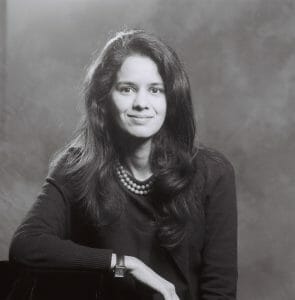In 2010, journalist and activist Saumya Roy co-founded a non-profit organization called Vandana Foundation to support the livelihoods of Mumbai’s poorest micro-entrepreneurs by giving small, low-interest loans. By 2013, she started getting requests for loans from waste-pickers in Deonar.
This year, she is out with a book about their lives, titled Mountain Tales: Love and Loss in the Municipality of Castaway Belongings, published by Profile Books.
How it all began
Saumya decided to write about the community of waste-pickers in 2016 when a fire began raging in the Deonar dumping grounds, however, her interest in the community was established in 2013 itself when she wanted to know how they used their micro-credit loans. At first, Deonar had seemed like a strange place in her imagination because, like most Mumbaikars, she had heard of it but had no first-hand experience.
Recalling her first visit to Deonar in the introduction to the book, Saumya writes about mountains of trash that were more than 120 feet high, flanked by the Arabian Sea on one side and a sequence of human settlements on the other. Since then, she has learnt more about the people who live and work there, and also reflected deeply on what the garbage in the landfill has to say about the city of Mumbai and its endless consumption.
Read more: Pandemic has hit the transgender community hard and no one is listening
The research process
The book is woven around the story of Farzana Ali Shaikh, a waste picker in her teens, her family and her neighbours in Deonar. Addressing some of the ethical concerns with writing about a community, she says she told them what she had in mind and got their consent. Some of the people she spoke to did not want to be written about, so she respected their boundaries. Others struggled with recalling their trauma, and so she maintained her space. Once some time had passed, however, many would voluntarily approach her to talk; wanting their stories documented.

Saumya tells me that Vandana Foundation stopped lending in this area around the time she began thinking of writing about the waste pickers. “Those who have shared their stories have done so of their own accord and not for any enticement other than their stories to be known to the world,” she clarifies.
“At least someone will know now how we lived.“
Hera Siddique, featured in the book, when she was shown the book cover
Lessons Learnt
Apart from doing fieldwork in Deonar, Saumya also collected archival material from the British Library and the Bodleian Library at Oxford to understand the formation of the dumping grounds. She was most surprised to learn about cachra trains. During her research, she learnt that trash first began to arrive in Deonar in 1899. In June that year, a train line was built to bring garbage collected within the city to Deonar. It was a marshland at that time but was gradually filled with trash.
Before writing this book, Saumya had to attend hours of court proceedings related to closing the dumping grounds. She also collected hundreds of pages of tender documents, garbage arrival documents, several government enquiry reports, and records of older court proceedings through the Right to Information Act (RTI).
The current situation in Deonar
If you’re wondering why these mountains of trash continue to exist, Saumya wants you to know that there are now close to 16 million metric tons of trash that are not easy to move. What gets accumulated includes rotten food, plastic bottles, medical waste, broken glass, twisted metal, ripped jeans, used make-up, rusted gadgets, and dead babies. When she first heard of this, Saumya was taken aback but kept her disbelief to herself, to maintain her trust with the community. She verified anecdotes with other waste-pickers who all told her the same story.
She also learnt about the impact of garbage on the community’s health. Life expectancy in the ward around the dumping grounds is 39 years, according to the state human development index, she says. Asthma, tuberculosis, eye disorders, anaemia are common. Many of the people featured in the book were suffering from tuberculosis. One of them, who died, was a teenager.
Saumya says that many people in Deonar practise traditional crafts, make shoes, and do tailoring and embroidery but waste-pickers are facing threats to their employment. Their financial situation has worsened, making meagre earnings that are unstable. Their work forces them to take risks to be able to survive financially. Some of them go to work before dawn to avoid being caught by security guards who could beat or detain them, Saumya tells me.
Looking back at the journey
Saumya was able to write the book thanks to residencies at the Rockefeller Foundation’s Bellagio Center, Blue Mountain Center, Carey Institute for Global Good and Sangam House. She also got two Logan Nonfiction fellowships to work on Mountain Tales.
In her book, she mentions that ‘in February 2021, the central government announced a $40 billion plan to reduce India’s air pollution by shrinking the country’s garbage mountains or ‘legacy waste’.’ So when asked about the policy changes that she would like her book to inspire, she emphasizes that she would rather leave the conversation about policy reform to waste experts with relevant knowledge.
As a writer, she believes that her task is to make visible the invisible. “Places like Deonar exist and grow because in the city we don’t look at them. I have tried to take the reader to this world and these lives—made of our trash,” she says.